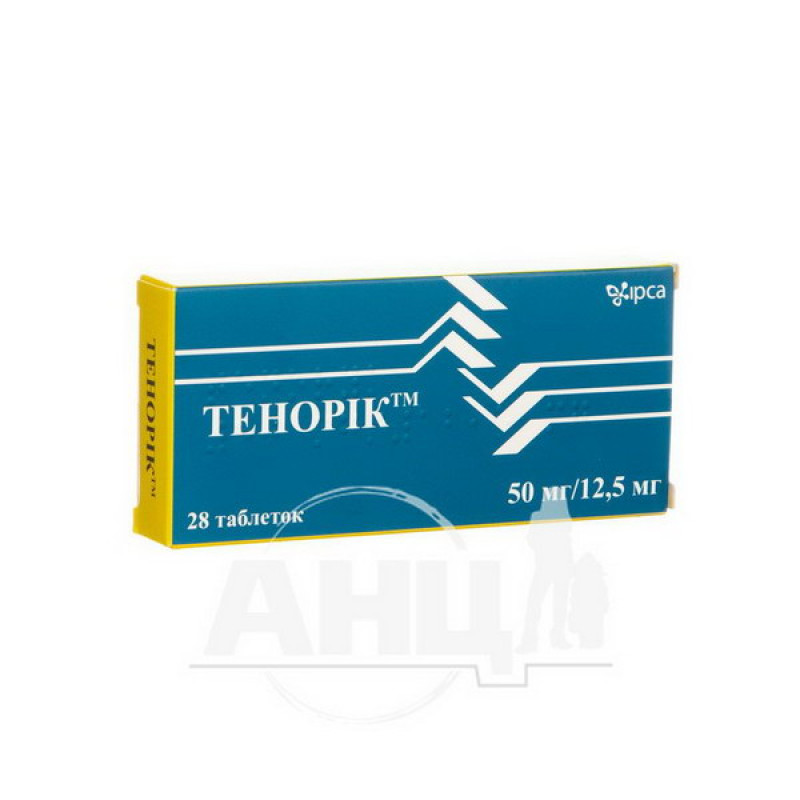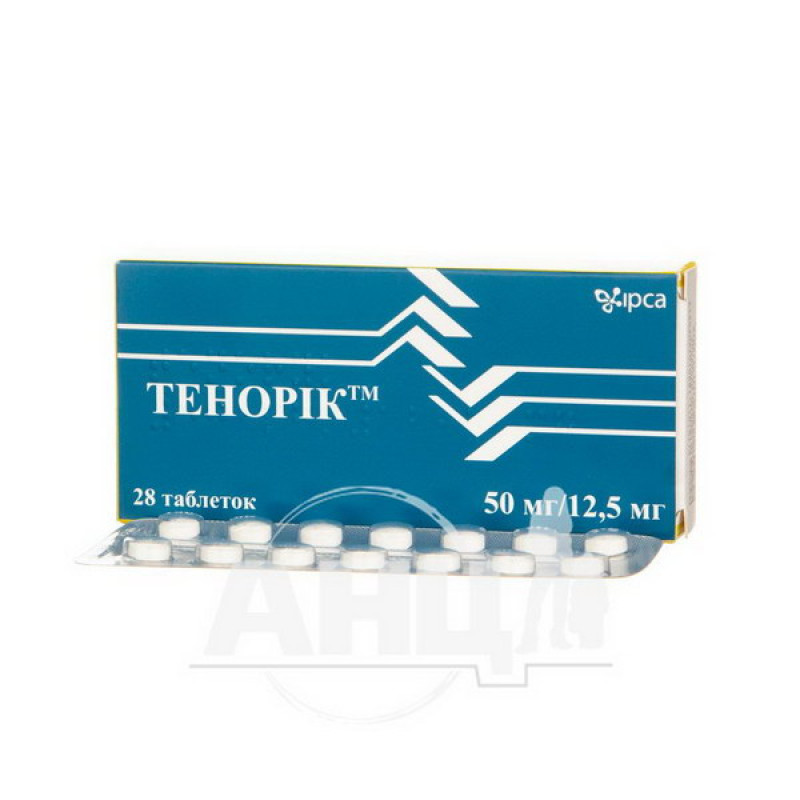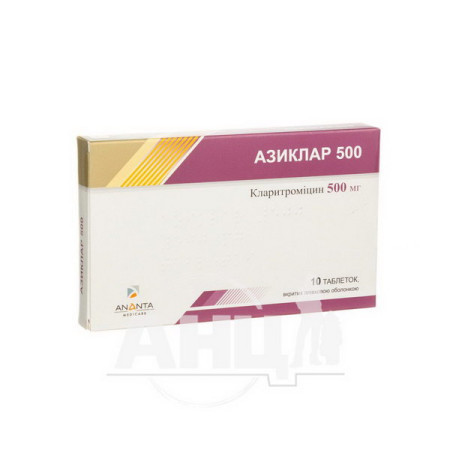Tenoric film-coated tablets 50 mg + 12.5 mg blister No. 28

Tenoric™ tablets are used for arterial hypertension.
Composition
One tablet contains (active ingredients):
atenolol - 50 mg; chlorthalidone - 12.5 mg.Excipients: anhydrous lactose, corn starch, anhydrous colloidal silicon dioxide, sodium lauryl sulfate, povidone, talc, magnesium stearate, hypromellose, titanium dioxide (E 171), light mineral oil, polyethylene glycol, carnauba wax; shell: isopropyl alcohol, dichloromethane, hydroxypropyl methylcellulose, purified talc, titanium dioxide (E 171), light mineral oil, macrogol.
Contraindication
hypersensitivity to the components of the drug; severe sinus bradycardia, arterial hypotension, metabolic acidosis, severe peripheral circulatory disorders, II-III degree blockade, sinoatrial blockade, sick sinus syndrome, cardiogenic shock, acute heart failure, decompensated chronic heart failure, untreated pheochromocytoma, anuria, renal and hepatic failure; precoma associated with Addison's disease; hypokalemia, intoxication with cardiac glycosides, bronchial asthma, bronchoobstructive syndrome; the drug is contraindicated in patients receiving verapamil within 48 hours; hyponatremia, hypercalcemia, simultaneous use of lithium preparations, gout.Method of application
Tenorik™ tablets should be administered to adults orally, without chewing, with water, before meals, preferably at the same time.
The dosage of the drug and the duration of treatment should be set individually depending on the therapeutic effect obtained.
"Tenorik™" is not intended for the initial treatment of arterial hypertension. The drug is prescribed in case of ineffectiveness of monotherapy.
Usually the initial dose of this drug is one tablet of 50 mg / 12.5 mg 1 time per day. If the therapeutic effect is insufficient, prescribe the drug one tablet of 100 mg / 25 mg 1 time per day. In most patients with arterial hypertension, the use of one tablet of this drug (atenolol 100 mg and chlorthalidone 25 mg) 1 time per day provides a sufficient therapeutic effect. With an increase in the dose, the decrease in blood pressure either does not occur or is insignificant, but if necessary, another antihypertensive agent may be additionally prescribed.
Application features
Pregnant women
The use of the drug is contraindicated in women during pregnancy and breastfeeding, since atenolol penetrates the placenta and into breast milk.
Children
The medicine should not be used in children.
Drivers
Given the possibility of dizziness when using the drug, you should refrain from driving vehicles and performing work that requires increased attention.
Overdose
Symptoms: bradycardia, II-III degree blockade, acute heart failure, arterial hypotension, respiratory disorders, arrhythmias, loss of consciousness, hypoglycemia, bronchospasm, convulsions, increased drowsiness, dizziness, nausea, hypovolemia, electrolyte disturbances with cardiac arrhythmias and muscle spasms.
Treatment: the drug should be canceled. Monitor and correct vital body functions. In addition to gastric lavage and the use of adsorbents, if necessary, the following measures are recommended: excessive bradycardia can be eliminated by administering 1-2 mg of atropine and/or installing a pacemaker.
Side effects
From the side of the cardiovascular system: bradycardia, feeling of coldness in the extremities, orthostatic hypotension, which may be associated with syncope, atrioventricular conduction disorders, symptoms of heart failure, palpitations, in patients with angina pectoris there may be an increase in attacks, arterial hypotension with intermittent claudication and may increase in patients with Raynaud's syndrome, necrotizing vasculitis, sick sinus syndrome, lupus erythematosus, arrhythmia.
Blood disorders: purpura, thrombocytopenia, leukopenia, agranulocytosis, eosinophilia, aplastic anemia, neutropenia, pancytopenia, worsening of diabetes mellitus.
On the part of the psyche: mood changes, nightmares, confusion, loss of consciousness, agitation, aggressiveness, psychosis, disorientation, hallucinations, depression, sleep disturbances, impaired concentration.
From the nervous system: dizziness, paresthesia, headache, fatigue, lethargy, drowsiness, convulsions, weakness, short-term memory loss.
On the part of the organs of vision: decreased tear secretion, conjunctivitis, dry eyes, visual impairment.
On the part of the respiratory system: bronchospasm in patients with bronchial asthma or in patients with a tendency to bronchial obstruction, shortness of breath, cough, stridor.
Gastrointestinal tract: dyspepsia, nausea, vomiting, constipation, diarrhea, dry mouth, anorexia, gastric irritation, spasms, thrombosis of mesenteric arterial vessels, ischemic colitis, abdominal pain.
From the hepatobiliary system: hepatotoxicity, intrahepatic cholestasis, liver dysfunction, cholestatic jaundice, pancreatitis, increased activity of liver enzymes.
On the part of the endocrine system: the development of a hypoglycemic state is possible, especially in patients with diabetes mellitus on the background of hypoglycemic therapy.
Allergic reactions: fever accompanied by pain and sore throat.
From the urinary system: interstitial nephritis.
Immune system disorders: Hypersensitivity reactions, including urticaria and angioedema.
From the reproductive system: impotence, Peyronie's disease.
Storage conditions
Store in the original packaging at a temperature not exceeding 25 °C, out of the reach of children.
Shelf life - 3 years.
There are no reviews for this product.
There are no reviews for this product, be the first to leave your review.
No questions about this product, be the first and ask your question.








